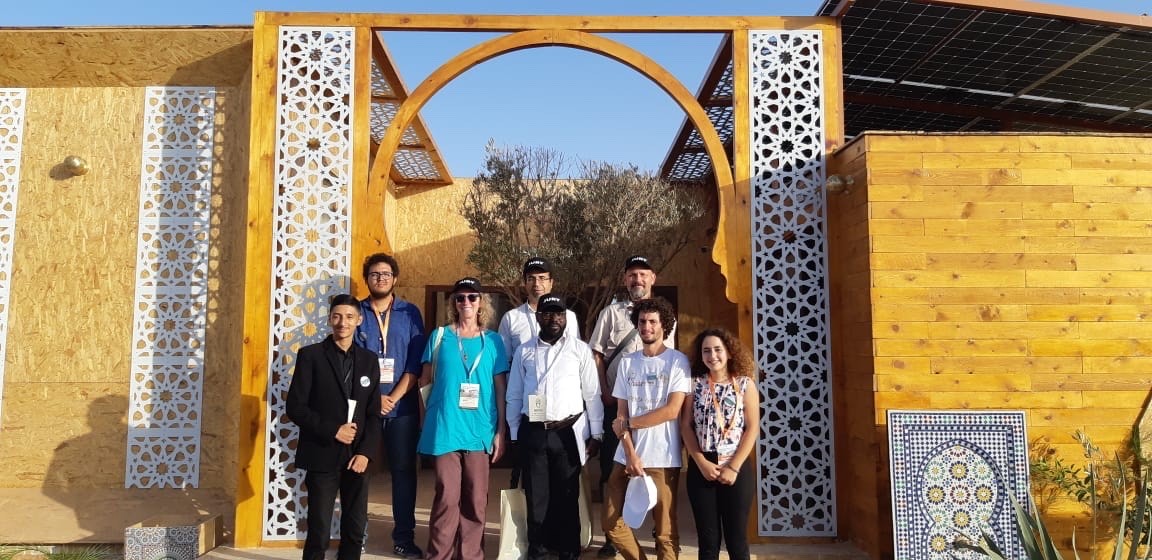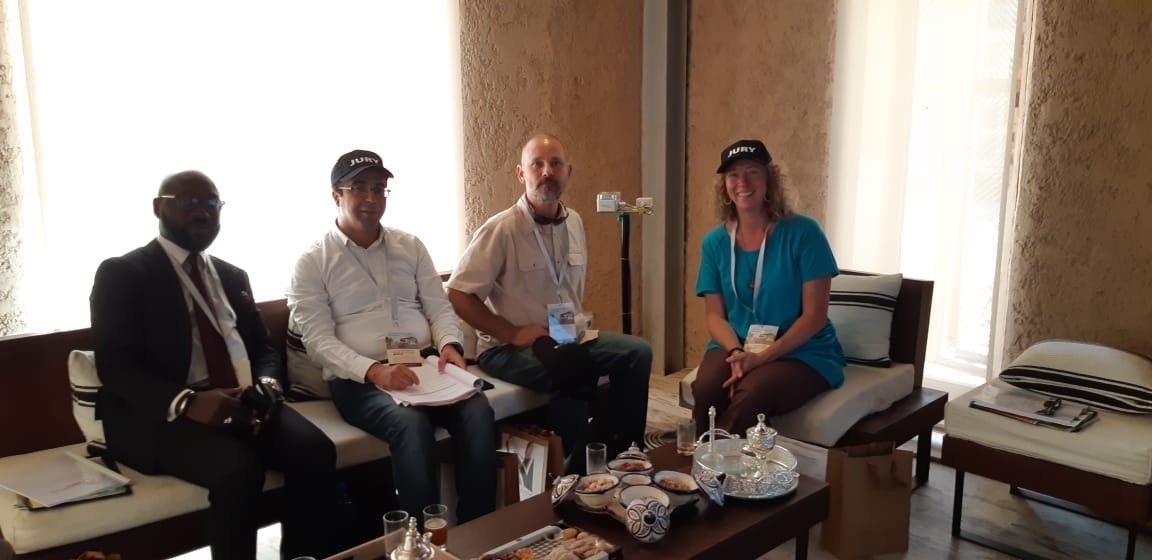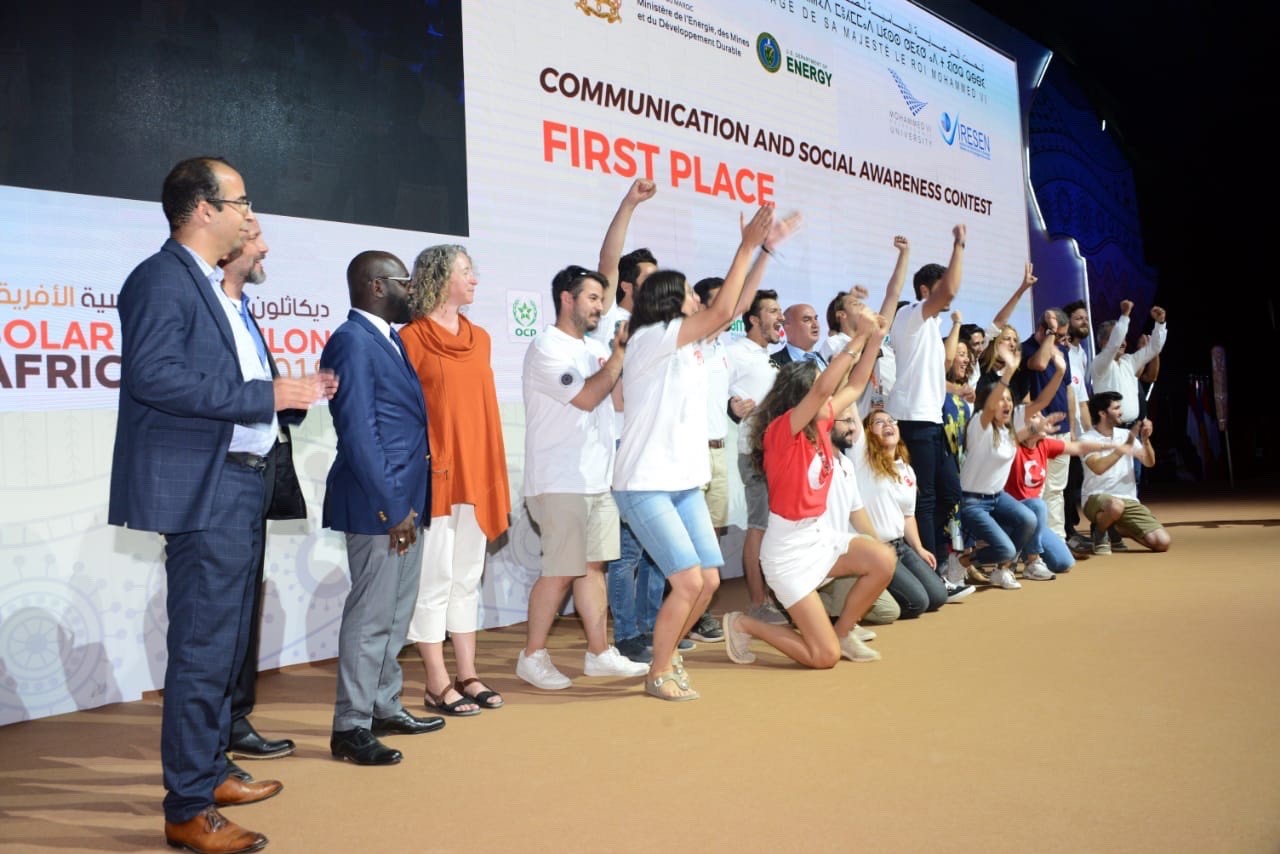First-Ever Solar Decathlon Africa Shines With Passion and Progress
Friday, November 15, 2019
By Stacy Hunt
In late September, I found myself in a futuristic eco-village outside of Ben Guerir, Morocco, six time zones away from home. As a juror for the Communications and Social Awareness Contest in the first-ever Solar Decathlon Africa, I had some tough decisions ahead of me.
This wasn’t my first rodeo. I was a juror for Solar Decathlon Europe in Szentendre, Hungary; I’ve attended several U.S. competitions, and I have worked with the U.S. organizing team since 2013.
But as soon as I stepped onto the site, Solar Decathlon Africa felt different. The energy of the students, and their region-, craft-, and culture-specific solutions were somehow more robust than what I’ve seen on the whole in other Solar Decathlons.
I still can’t quite put my finger on why, but I expect it’s grounded in one particular requirement of this competition: student teams were strongly encouraged to design and build unique, net zero energy houses with regional raw materials specific to Africa.
It sounds simple, but the range of solutions these students presented was inspiring, resourceful, and directly relevant to African communities.
There were similarities, of course. Students came together across 18 teams, representing 20 countries and 54 universities. They designed and built their homes during serious weather events—which seems to be a signature of Solar Decathlon worldwide. Students were passionate, developed strong and lasting bonds with each other and their fellow teams, and created innovative solutions to real-world problems.
Here’s a small taste of what I found delightful, though it’s by no means inclusive.
- Five houses utilized fully passive strategies, including thermal mass and natural ventilation designs, to completely eliminate mechanical systems that can be costly to purchase, install, and operate in low-income or rural communities.
- Team Sun Implant developed hemp-based building material solutions to spur economic development in an impoverished, rural mountain community whose primary source of income is the illegal sale of cannabis.
- Team BOSPHORUS blended the traditional Moroccan architecture of a riad (a dwelling with a central core) and traditional Turkish home design to create a solution that would be viable in both countries. They also developed unique communications strategies – gamifying building science through an activity in their home, and making their house available as an Airbnb to provide visitors a first-hand experience of a sustainable home.
- Team DarnaSol built a “solar tree,” with shade, benches, and power outlets, that served as a communal point for students to gather, charge devices, and get out of the hot African sun.
- Many teams incorporated traditional Moroccan craftsmanship with innovative material and information technology, blending old and new in innovative ways.
As a juror in the Communications and Social Awareness Contest, I had the formidable task of selecting the teams that shone above the rest for the thoroughness, quality, and creativity of their communications and outreach strategies, plans, and materials. These parameters are as critical to the competition as the technical contests—it simply isn’t enough for teams to design, build, deconstruct, transport, reconstruct, operate, and decommission their homes (that exhausts me just saying it!). To be successful, they also must evangelize—and teach—the benefits of energy efficiency and renewable energy to their partners, to their communities, and to the world.
All the teams did an amazing job, but our three Communications and Social Awareness Contest winners went above and beyond:
Our third-place team – TADD-ART, did something that very few teams did – they communicated WITH their home, instead of ABOUT their home. Their messaging was embodied in every aspect of their project, with a focus on traditional Moroccan craftsmanship and modern design techniques.
Our second-place winner – NeoPetra, had an exceptionally professional approach to communications strategy and planning. And, not only did they create a strong brand and polished communications materials for their public audiences, they were smart enough to recognize that INTERNAL communications are as critical to a successful Solar Decathlon project as EXTERNAL communications.
Our first-place winner – BOSPHORUS, checked all the required boxes for communications with great skill. But, that’s not what set this team apart. The deciding factor for our first-place team was their incredible creativity. This team did things that surprised and delighted us—things we would never have considered ourselves, that created innovation in reaching new audiences in fun and current ways.
There’s so much to explore among these teams—visit them yourself at the Solar Decathlon Africa website.
Stay tuned for Solar Decathlon Latin America and Caribbean in December, the U.S. Department of Energy Solar Decathlon Build Challenge in June/July 2020, and Solar Decathlon Middle East in September 2020!
………………
Photos courtesy of Hajjaj Moussaid.
Tags: Awards, Competition, Contests, Solar Decathlon Africa




